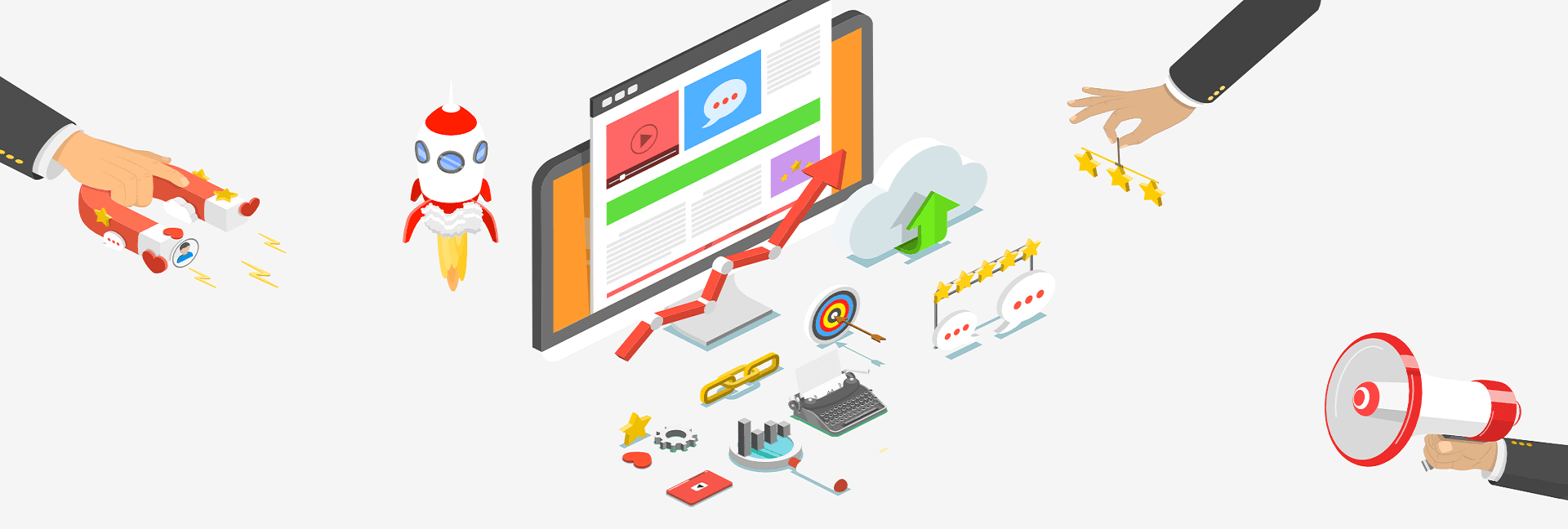A marketplace website offers business owners an exciting opportunity to connect buyers and sellers on a single platform. However, development costs vary significantly based on numerous factors. This guide to the cost of building a marketplace website helps you estimate expenses, so you can budget effectively and plan your project accordingly.
Factors that Impact the Cost of the Marketplace Website
The cost depends on your desired complexity and the features you want to include in your marketplace website. Let’s delve into these crucial components to give you a better understanding.
Development Approach
Development vs Marketplace Software
When you start planning to build a marketplace website, one of the very first decisions you make is whether to build from scratch or use a ready-made platform.
- Custom development: It provides complete freedom in designing and utilizing the marketplace. However, it requires a significant investment of time and money. The build of a custom marketplace typically costs around $50,000 to $500,000.
- Marketplace software: You can use pre-built marketplace solutions, such as those from Sharetribe or Magento. Although these platforms come with lower upfront costs and faster development times, they may have a steep learning curve. Marketplace software subscription fees range from $100 to $1,000 per month, making them ideal for startups or smaller businesses.
In-House Team vs Outsourcing
However, your choice between hiring an in-house team or outsourcing the development is equally important.
- In-house development: You have full control but incur higher long-term costs due to salaries, equipment, and overhead. The budget for an in-house team can range from $100,000 to $500,000 per year.
- Outsourcing: If you work with an agency or freelance developers, it is much more flexible and often cheaper. Development outsourcing typically ranges from $30 to $150 per hour, depending on the location and experience of the developers.
Design: User Interface (UI) and User Experience (UX)
Your website needs to look good and provide a good user experience, even if it doesn’t require extensive graphic design and web development. A well-designed marketplace will keep users interested and coming back.
- UI Design: This aspect of user interface design focuses on how your website appears while maintaining consistency with your brand. UI design costs can range from $5,000 to $30,000, depending on complexity.
- UX Design: User experience design ensures that your marketplace is well-designed and easy to navigate for both buyers and sellers. The cost of UX design depends on the complexity and site requirements.
Marketplace Essential Features
The overall cost of your marketplace website will be largely influenced by its features. There are, of course, many features that need to be considered.
- User registration and profiles: Buyers and sellers need to set up accounts, maintain profiles, and track activity. This feature typically costs between $3,000 and $10,000 to create.
- Search and filtering: The search engine needs to be robust so that products or services are easily found. Implementing this feature involves a $5,000 to $15,000 investment in search and filtering capability.
- Payment gateways: Integrating secure payment systems such as Stripe or PayPal can cost anywhere from $5,000 to $20,000, depending on the number of currencies and payment options supported.
- Reviews and ratings: It’s essential to allow users to leave feedback for sellers on the platform. A review system will cost between $3,000 and $8,000 to implement.
- Order and inventory management: Sellers need to control their listings, stock, and orders. Adding this feature to your apps can cost between $10,000 and $50,000.
Back-End Development
A marketplace website’s back-end infrastructure facilitates all server-side operations, such as data processing, user authentication, and transactions.
- Server and hosting: Commonly used services to host marketplace websites include AWS, Google Cloud, and Microsoft Azure. There is a wide variance in prices for cloud hosting, ranging from as low as $100 per month to as high as $10,000 per month, depending on the amount of traffic and resource consumption.
- Database management: Storing user data, transaction history, and product listings requires efficient database management. Building a scalable database solution can range from $10,000 to $50,000.
Security and Compliance
You need to ensure that your marketplace website is secure and compliant with legal standards, especially when dealing with user and financial data.
- SSL certification: To secure communications between users and your website, you use Secure Socket Layer (SSL) certificates. SSL certification costs between $100 and $500 per year.
- Data protection compliance: If your target market is subject to data protection laws (such as GDPR or CCPA), you must comply with them. Ensuring compliance with the law could cost as little as $5,000 and as much as $20,000.
Types of Costs in Building a Marketplace Website
Here’s a breakdown of the main categories of expenses involved in building a marketplace website:
- Front-end development: This includes writing the front-end part of the website, which is the layout and design.
- Back-end development: This involves building the server-side part of the infrastructure, including the database and APIs.
A standard marketplace website could cost about $20,000-$100,000 to develop, but a more complicated one can reach from $15,000 to $500,000.
Ongoing Costs
- Scalability: As your marketplace grows, you need to expand your hosting and infrastructure to support the increased traffic.
- Feature updates: To keep the marketplace competitive, new features will add to the development costs and will be introduced over time.
Design Costs
- UI design: User engagement will depend on the visual appeal of the marketplace. The cost for UI design can range from $5,000 to $30,000.
- UX design: For any successful marketplace, it’s essential to deliver a smooth, easy-to-navigate user experience. The cost of UX design can range from $10,000 to $40,000, depending on complexity.
Marketing and Launch Costs
You’ll have to invest in marketing efforts to attract users. Marketing campaigns, including SEO, social advertising, and content marketing, can cost anywhere from $5,000 to $50,000, depending on their size and scope.
Legal and Regulatory Costs
The type of products or services you sell on your marketplace and the market you aim to serve may require regulatory obligations such as a business license or tax registration. Legal professionals can cost between $5,000 and $20,000.
Additional Costs to Consider
- Third-party integrations: Adding third-party services such as shipping, accounting, or inventory management can range from $2,000 to $15,000, depending on the complexity of the integrations.
- Customer support: For 24/7 customer service, your options will range from $5,000 to $20,000 annually, depending on the complexity of your support needs.
Conclusion
A marketplace website is a significant investment, and its costs vary according to the development approach, platform features, design, and hosting. A basic marketplace website will cost you around $50,000, but a feature-rich, custom-built site may exceed $500,000.
You must budget for both initial development costs and ongoing costs such as hosting, marketing, and feature updates to ensure your marketplace is successful. With careful planning of all development aspects, you’ll be able to craft a successful marketplace website that stands out in the crowd of online businesses.












